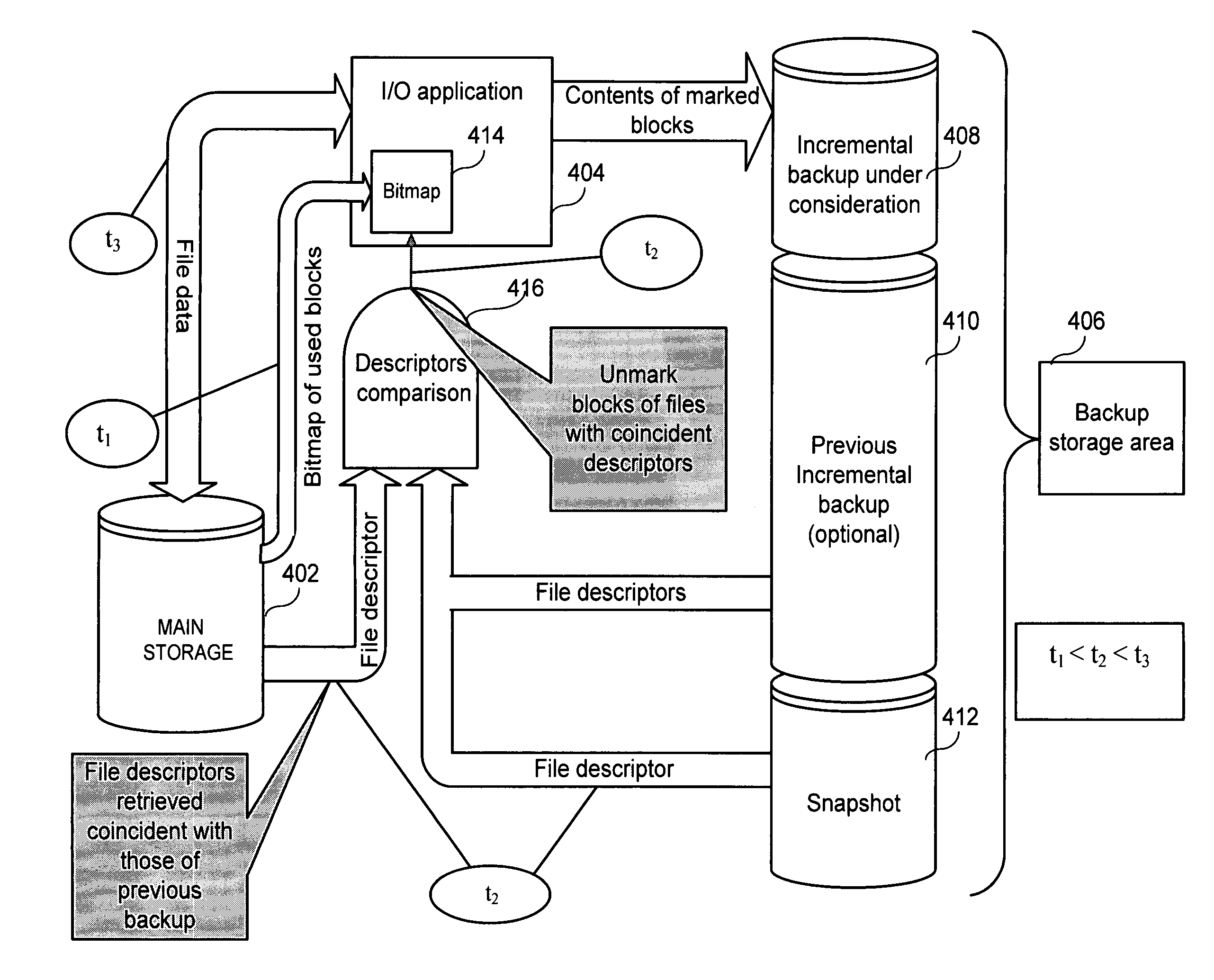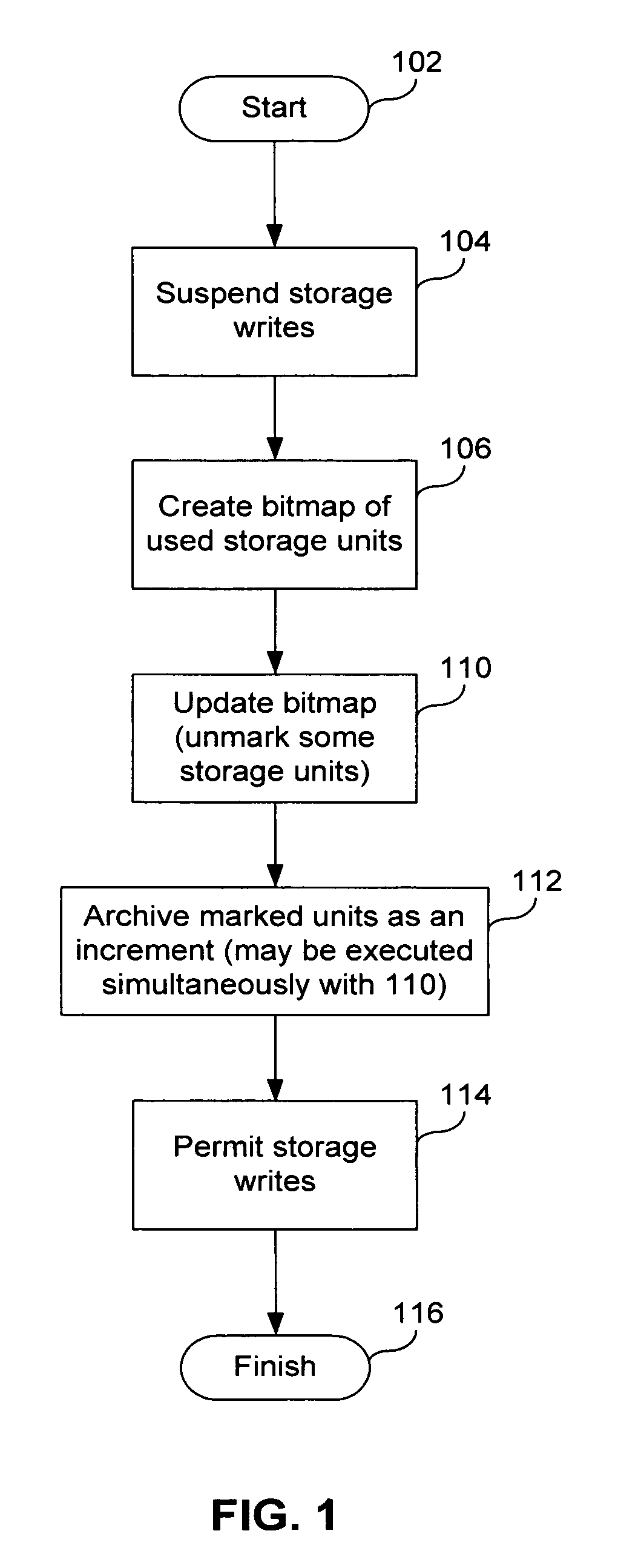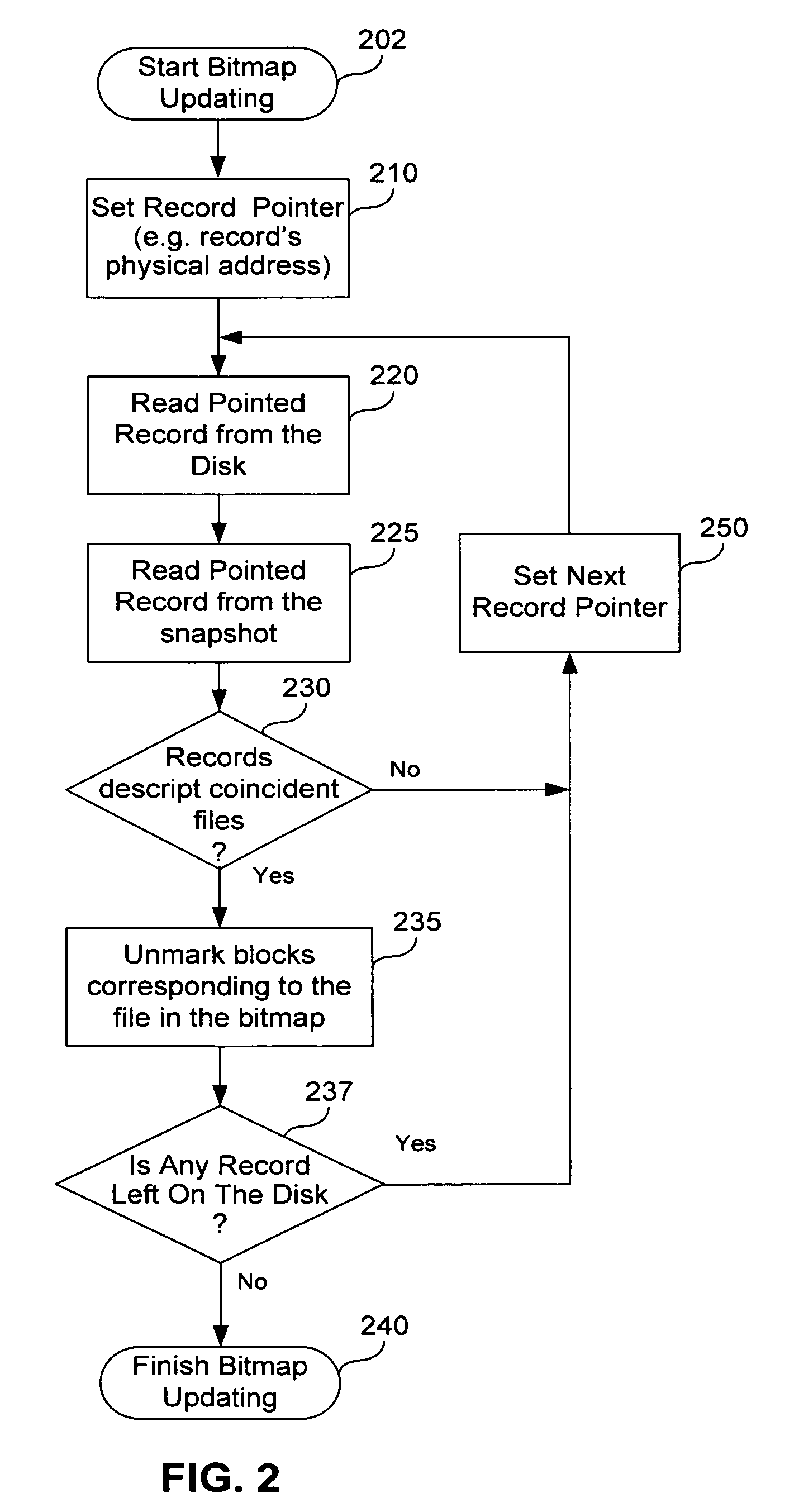Fast incremental backup method and system
a backup method and incremental backup technology, applied in the field of archiving and copying data, can solve the problems of relatively large available space for archived data, relatively high cost of archiving per unit of archived data, and relatively long process of archiving
- Summary
- Abstract
- Description
- Claims
- Application Information
AI Technical Summary
Benefits of technology
Problems solved by technology
Method used
Image
Examples
Embodiment Construction
[0021]Reference will now be made in detail to the embodiments of the present invention, examples of which are illustrated in the accompanying drawings.
[0022]In order to make the archiving process more efficient, it is proposed to form a backup on a physical level, and in addition, to use information that characterizes the logical structure of the data storage device, such as a hard disk drive.
[0023]It should be noted that this approach, in some cases, does not always identify every single data block that is not subject to archiving. However, the proposed method, with a minimal expenditure of time and resources, provides for a guaranteed exclusion of a substantial majority of the blocks from archiving of those blocks that do not need to be archived. Subsequently, for those blocks were not excluded from archiving, and are therefore subject to archiving, it is possible to use traditional methods and other suggested mechanisms to further reduce the number of data blocks that are actuall...
PUM
 Login to View More
Login to View More Abstract
Description
Claims
Application Information
 Login to View More
Login to View More - R&D
- Intellectual Property
- Life Sciences
- Materials
- Tech Scout
- Unparalleled Data Quality
- Higher Quality Content
- 60% Fewer Hallucinations
Browse by: Latest US Patents, China's latest patents, Technical Efficacy Thesaurus, Application Domain, Technology Topic, Popular Technical Reports.
© 2025 PatSnap. All rights reserved.Legal|Privacy policy|Modern Slavery Act Transparency Statement|Sitemap|About US| Contact US: help@patsnap.com



